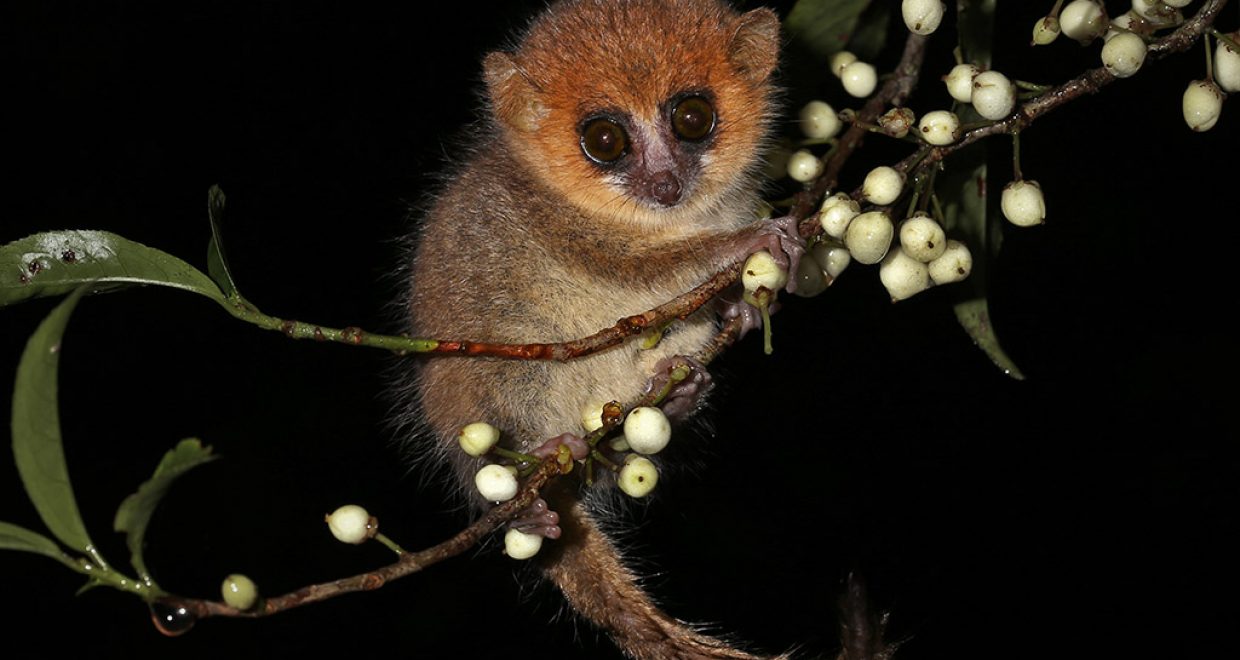Forest edges have genetic consequences: a further threat for lemurs in Madagascar?
Natural habitats such as forests continue to be destroyed at an alarming pace across the globe and are becoming increasingly fragmented. Habitat fragmentation directly leads to an increase of habitat edges at the border between forests and the surrounding landscape. Researchers have studied ecological edge effects for several decades and have found enormous differences, for example, in temperature, light intensity and humidity between the edge and the interior of forests. You can feel this effect yourself when you enter a forest, it gets cooler, darker and more humid when you leave the edge and head towards the interior. These contrasting conditions can lead to differences in the vegetation and to changes in the distribution of animals in the forest. Some species seem to avoid forest edges, whereas others prefer the edges and occur there in high numbers.
 Such positive or negative edge responses should be reflected in the movements of animals between the edge zone and the interior of a forest. If this is the case, we can expect genetic effects of fragmentation, as genetic exchange between different parts of the forest could be reduced or changed. However, as far as we know, molecular edge effects have not yet been studied systematically. We therefore conducted the first study on molecular edge effects in the golden-brown mouse lemur, a forest-dwelling Endangered lemur that seems to like forest edges.
Such positive or negative edge responses should be reflected in the movements of animals between the edge zone and the interior of a forest. If this is the case, we can expect genetic effects of fragmentation, as genetic exchange between different parts of the forest could be reduced or changed. However, as far as we know, molecular edge effects have not yet been studied systematically. We therefore conducted the first study on molecular edge effects in the golden-brown mouse lemur, a forest-dwelling Endangered lemur that seems to like forest edges.
Mouse lemurs are small (c. 60 g), nocturnal and our distant relatives, i.e., they also belong to the primate order like us. They occur only in Madagascar and are found nowhere else on earth. This study on the golden-brown mouse lemur was conducted by a team of students and researchers from the University of Veterinary Medicine Hanover, Germany and the University of Toronto, Canada. Fieldwork took place in the Ankarafantsika National Park in northwest Madagascar, the largest remaining forest tract in the geographic range of this species. However, even here we can already find many forest edges.
 We obtained small tissue samples from a total of 41 animals that lived either close to the forest edge or in the interior, with both areas only being up to 1.4 km away from each other. This means that in principle, a single animal could move from the edge to the interior site within 1–2 nights. We investigated whether edge animals had a higher or lower genetic diversity than core animals, and whether both fractions of the population are genetically well mixed or not. Indeed, we found signals of a clear genetic distinction and very little exchange between the edge and core, despite the small geographic distance. In fact, we could infer an internal sub-division into an edge-fraction and a core-fraction of the population. This may indicate that animals prefer to stay in the familiar habitat type (forest edge or forest interior) and avoid changing to different environmental conditions.
We obtained small tissue samples from a total of 41 animals that lived either close to the forest edge or in the interior, with both areas only being up to 1.4 km away from each other. This means that in principle, a single animal could move from the edge to the interior site within 1–2 nights. We investigated whether edge animals had a higher or lower genetic diversity than core animals, and whether both fractions of the population are genetically well mixed or not. Indeed, we found signals of a clear genetic distinction and very little exchange between the edge and core, despite the small geographic distance. In fact, we could infer an internal sub-division into an edge-fraction and a core-fraction of the population. This may indicate that animals prefer to stay in the familiar habitat type (forest edge or forest interior) and avoid changing to different environmental conditions.

The study, ‘Molecular edge effects in the Endangered golden-brown mouse lemur Microcebus ravelobensis’, recently published in Oryx- The International Journal of Conservation, provides the first indication of molecular edge effects which may have major consequences for evolutionary processes (e.g. for local adaptation) but also for conservation. Fragments already harbour comparatively small animal populations. A subdivision of the gene pool available in a fragment further reduces the number of animals that can effectively reproduce with each other. This may in turn increase the risk of inbreeding substantially and reduce the genetic diversity in any given part of the forest fragment. These factors are regarded as major threats for fragmented populations and can help to explain their very high vulnerability to stochastic events (e.g. storms or diseases) or human disturbances.
Photo credits:
1- Golden-brown mouse lemur in the Ankarafantsika National Park (photo: Ute Radespiel)
2- Forest edge adjacent to a savannah in the study area in the Ankarafantsika National Park, northwestern Madagascar (photo: Shawn Lehman)
3- Continuous forest in the Ankarafantsika National Park (Photo: Shawn Lehman)







